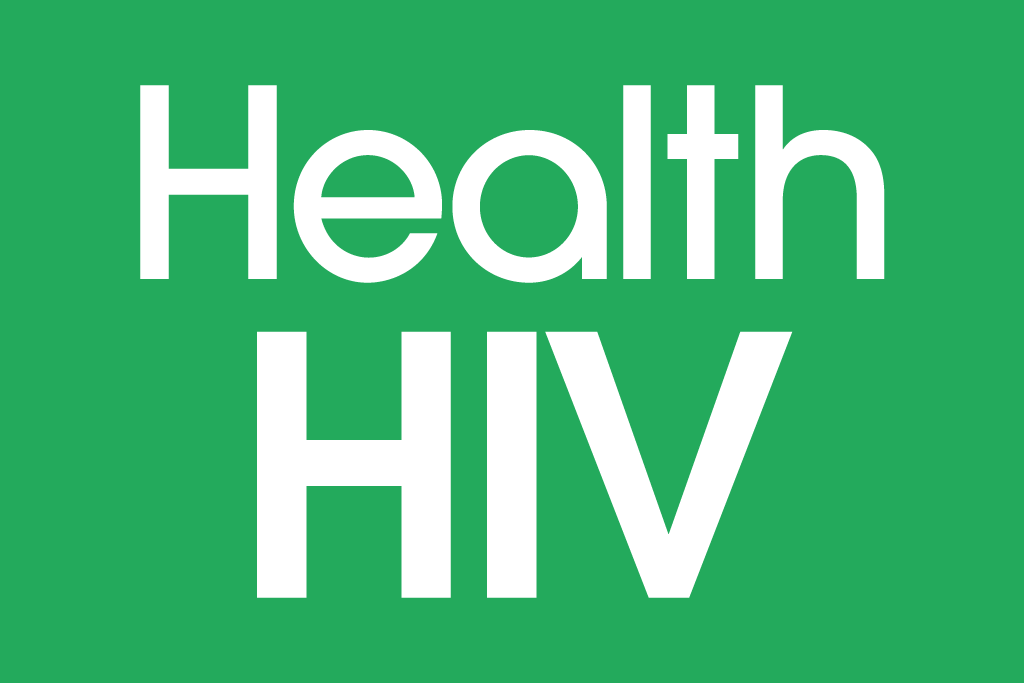The intersection of global famine, war and co-intersecting plagues are provoking policy challenges to RUTFs & HDRs
By David Miller, Frederick Schilling, T. Bird
The butcher’s bill being served because of the global food crisis isn’t surprising. The World Food Program (WFP), UNICEF, and a legion of NGOs managing famines ranging from Venezuela to South Sudan all warned the world that the wolf was at the door months before Putin decided to add a new chapter to the encyclopedia of atrocities.
The intersection of COVID-19, HIV, TB, and malaria; international conflicts fueled by proxy fights leveling cities; as well as domestic political chasms continue to over-burden the world’s emergency response resources. The warnings were sounded as loud as the air raid sirens in Ukraine as far back as 2019, when it became clear that climate change, overpopulation, and the resurgence of the Cold War were going to be the genesis of a new round of global famine. Jeannie Wraight’s article in A&U magazine last October discussed the challenges addressed in international policies affecting access to RUTFs for acute malnutrition (SAM).
The World Health Organization’s (WHO) report in 2020 noted that 149 million children under five were estimated to be stunted, and an estimated 45 million were suffering from wasting. It is estimated that over eighteen million children under age five are affected by the most extreme form of malnutrition, SAM, and are 12 times more likely to die than well-nourished children.
“Despite the number of people needing aid having already risen by more than 1 million to 17.4 million this year and estimated to rise by more than 1 million by the end of 2022, the WFP identified a food aid funding gap of $900m (£686m). Only 11% of its funding target has been met,” stated David Beasley, Executive Director of the United Nations World Food Programme. “We’ve got now 45 million people in 38 countries that are knocking on famine’s door. And you may see a general price increase of food, let’s say 38 to 40%, but in some very tough places like Syria, it’s going to be 100% to 200%. In Yemen, we’ve already cut rations to eight million people, about 50%, in Chad, Niger, and Mali. We already see an incredible number of people talking about migrating from Central America into the United States … If we don’t get the food that we need to reach the people in need, whether it’s in the Middle East, Northern Africa, or Central America, you’re going to have famine and you will have destabilization of nations and then mass migration. And this will cost a thousand times more than if we can get the food before they either die or create political unrest.”
The Biden administration has implemented plans to increase international aid beyond the previous administration’s efforts. That includes $58.5 billion for the State Department and U.S. Agency for International Development for bilateral economic assistance, which the administration proposes to spend $28.1 billion in fiscal 2022.
Also included in enhanced planning is funding for multilateral aid programs, such as the Global Health Program managed by the U.S. Agency for International Development, rising from $1.45 billion to $3.5 billion, and contributions such as the International Development Corporation and the African Development Fund, to $3.1 billion. The announcement of the Biden Administration in March, to defend global food security and provide more than $1 billion in new funding towards humanitarian assistance for those affected by Russia’s war in Ukraine, over the coming months.”
The limited tools for addressing famine are too familiar to the legions of international disaster organizations addressing generations of turmoil in low- and middle-income countries. One of the leading ways to cauterize clinical manifestations of acute malnutrition is Ready-to-Use Therapeutic Food (RUTF). The hundreds of organizations involved in famine relief — Partners in Health, World Vision, Doctors Without Borders, UNICEF, the International Rescue Committee, Red Cross, and many others — are all at a crossroads in this cornucopia of catastrophe. And while a new generation of NGOs has helped during the current crisis, World Central Kitchen (WCK) has emerged as the leader in addressing famine in Ukraine. To date, WCK has delivered over 25 million meals, including increased kitchen response and presence during the conflict in Ukraine. Team Rubicon, an international disaster response organization also on the front lines of the crisis in Ukraine, is providing medical teams who will be amongst the first to encounter widespread SAM in Europe for the first time in decades.
The specter of the war in Europe on the nightly news echoes Dublin in 1847, Berlin in 1918 during the Blockage, and the Dutch Hunger Winter. The common denominator of all these war-related famines: civilians, and especially children, starve. Mothers starve while entire families are eviscerated by the lack of nutrition and accompanying disease. Aid often arrives too late to save the most vulnerable. With all its bloodshed and trauma, Ukraine’s conflict is unraveling what’s left of the fabric of global food security. Ukraine’s Ministry of Agriculture has indicated that 30% of the country’s farmland is occupied or unsafe. The war’s disruptions have led to surging prices and raised fears of food shortages in parts of the developing world. Before the Russian invasion, the country was responsible for 12% of global wheat exports, 16% of global corn exports, and 46% of global sunflower oil production. Economists are looking at the immediate numbers — countries like Indonesia, Bangladesh, and Egypt, which import significant amounts of wheat from Ukraine, are realizing stark realities about their food supplies. It will take years, even decades, for the commodities market to normalize.
Before the war in Ukraine, Congress had introduced the Global Malnutrition Prevention and Treatment Act (HR 4693) sponsored (S.2956/H.R.4693). The effort was led by Senator Christopher Coons (D-DE) and Representative Gregory Meeks (D-NY), Chair of the House Committee for Foreign Affairs, who had a long record of working with the United States International Development Agency (USAID) to support countries in addressing global famine.
A relatively new source of funding to incentivize the private sector to address gaps in the delivery and improvement of RUTFs and to develop other tools for treating and preventing malnutrition is the U.S. International Development Finance Corporation (DFC) — through Samantha Power, Administrator of the United States Agency for International Development (USAID) — which is increasing coverage for high impact, proven and affordable interventions. Those efforts include research on next-generation therapeutic foods to treat severe acute malnutrition (SAM), which is the leading cause of death of children worldwide, accounting for more than three million deaths annually. Child death from malnutrition and starvation are expected to increase exponentially in 2022.
RUTFs are essential public health commodities for resource-poor settings to clinically address multiple disease states exacerbated by the physiological effects of famine. In addition to RUTFs, Humanitarian Daily Rations (HDR) are a critical part of humanitarian nutrition to feed large populations of displaced persons or refugees under emergency conditions. A single HDR is designed to provide a full day’s sustenance to a moderately malnourished individual. Current supply chain and transport challenges further prohibit the distribution of HDRs.
Implications of global food insecurity for national defense posture at the time of writing this article:
- ETHIOPIA – 25.9 million estimated people in need of humanitarian assistance in Ethiopia, 844,589 estimated refugees in Ethiopia, 4.5 million acutely malnourished (source: USAID Fact Sheet https://www.usaid.gov/sites/default/files/documents/Ethiopia_Fact-Sheet_Nutrition_Oct-2020.pdf)
- UKRAINE – Ukraine has the second largest HIV epidemic in the region, with nearly 250,000 people living with HIV (PLHIV) – many of whom do not know their HIV status. As of July 2022, 12 million Ukrainians have been displaced, with five million going to neighboring countries and seven million people thought to be displaced within Ukraine (source: USAID Fact Sheet https://www.usaid.gov/ukraine/fact-sheets/health)
- AFGHANISTAN – 2.5 million Afghans displaced to different countries, 2.2 million Afghans are severely food insecure, with over 700,000 Afghans internally displaced (source: USAID Fact Sheet https://www.usaid.gov/sites/default/files/documents/1866/afghanistan_ce_fs04_09-30-2014.pdf)
RUTFs are part of the overarching approach to meeting the millennium development goals (MDGs) developed by the United Nations. A study by Verified Market Research in 2021 identified the worldwide revenues for RUTFs at $363.72 million in 2019 and growing to $807.89 million by 2027, expanding at a CAGR of 10.5% for the forecast period. According to the UN report on Implications of Ready to Use Therapeutic Food for Children in Low-Income Countries, “One thousand metric tons of RUTF treats approximately 76,500 children for about 3.6 million USD (based on an average price of $50 per 150-sachet carton at approximately 13.8 kg per carton).”
The most commonly recognized RUTF being distributed, Plumpy’Nut, a peanut-based paste for treatment of severe acute malnutrition by French company Nutriset, had set the standard for other commercially available products in the field before new generations of RUTFs began coming to market. MANA is a RUTF composed of peanut paste, milk, and a special mix of vitamins and minerals designed to meet a child’s basic nutritional needs and provide nutrition and calories. The third leading RUTF on the market was developed with funding from the U.S. President’s Emergency Plan for AIDS Relief (PEPFAR) and technical support from the Food and Nutrition Technical Assistance III Project (FANTA), the Institut de Recherche pour le Development (IRD), Vietnam’s National Institute of Nutrition (NIN), and UNICEF. This rice/soy/mung bean-based RUTF is produced in Vietnam and offered as an alternative to the peanut-based Plumpy’Nut. The product is known as “High-Energy Bar for Integrated Management of Acute Malnutrition” (HEBI). Another RUTF, BP100, manufactured by GC Reiber, is delivered as a biscuit that can be made into a porridge. It serves as a fortified food rehabilitation diet for the malnourished but with a higher energy density with a four-year lifespan.
SUSTAINN (Superior Utility Supplementation Therapeutic Agent for Indicated Nutritional Needs) is being developed by AREV Life Sciences, based in Vancouver. This initiative aims to demonstrate the delivery of measurable therapeutic effect in forthcoming inferiority/superiority studies through a unique next-generation RUTF composition. SUSTAINN is intended to treat inanition, the complex disease state that is currently the culprit in the deaths of nine million people worldwide annually, according to the international relief agency Mercy Corps; more than the death toll of AIDS, malaria, and tuberculosis combined. Inanition is clinically characterized by dysbiosis, environmental enteropathy, neurodegenerative disease, organ failure, scurvy, beriberi, Kwashiorkor, and anemia due to SAM.
Innovations in RUTFs have demonstrated significant clinical benefits. Supporting neurological growth and function through the provision of essential fatty acids (“EFA”) in SAM patients was studied in a randomized, triple-blinded, controlled clinical trial by Wiley and published in the British Journal of Nutrition. This trial demonstrated that DHA Omega-3 supplements boost cognition in malnourished Malawian children. Low linoleic acid foods with added DHA given to Malawian children with severe acute malnutrition improve cognition.
Another initiative by Evolve BioSystems, in collaboration with the International Centre for Diarrheal Disease Research, Bangladesh, announced a study of Evivo® in infants recovering from SAM, an activated form of the beneficial bacteria Bifidobacterium to restore essential bacteria to the gut microbiome. The study conducted at Dhaka Hospital in Bangladesh of infants under six months diagnosed with SAM, as well as non-malnourished infants under six months of age who are hospitalized for infections, is supported by the Bill & Melinda Gates Foundation.
Since 2015 the global community has established specific measurements of improvement greatly needed in nutrition. The World Health Assembly, with 194 countries representing, committed to ending “all forms of malnutrition” by 2030 as part of the Sustainable Development Goals (SDGs). SDGs are a focus at the Global Nutrition for Growth (N4G) conference. As of December 2020, more than $3B in financial commitments were verified from various stakeholders, including the Government of Canada, Pakistan, World Vision International, and UNICEF. The World Bank Guidelines within the Codex Alimentarius addressed using RUTFs this past year. The Codex Committee on Nutrition and Foods for Special Dietary Uses agreed on a new guideline on RUTFs to serve as a reference for governments in best practices for treating childhood wasting. The Codex ensures that RUTFs are effective and enable recovery and growth of children with wasting.
Data presented in peer-reviewed publications demonstrate the limited clinical utility of current RUTF formulas. The data suggest these are more accurately categorized as Ready to Use Supplemental Foods (RUSFs) rather than RUTFs. Despite Community-Based Management of Acute Malnutrition (CMAM) being World Vision’s core project model in nutrition, it’s not without complications. CMAM is a methodology for treating SAM using a triage approach. Further driving the challenges facing access to RUTFs are aflatoxins, currently present in the primary peanut-based RUTFs on the market. The Global Action Plan on Child Wasting (GAP report), created November 2021 by UNICEF and commissioned by the UN Secretary-General, outlines a key priority to support efforts to prevent and reduce aflatoxin and other toxins in therapeutic foods.
The COVID-19 pandemic and the supply chain disruption would have been horrific enough to shake the fragile foundations of global food security. Afghanistan has experienced unprecedented famine; the siege of Tigray left numerous people starving to death and displaced; and Yemen has become a hole in the collective soul of the 21st century that may never heal. Not since World War II has Europe faced the kinds of brutality that are now part of our daily diet as if the war in Bosnia had not happened. The center cannot hold without more resources and bold action necessary to change the course of malnutrition and its comorbidities. RUTFs, along with every other tool in the international public health toolbox, are our best hope.
Special thanks to Sateesh Apte, MD, and Frank Moresca for contributing to this article.



